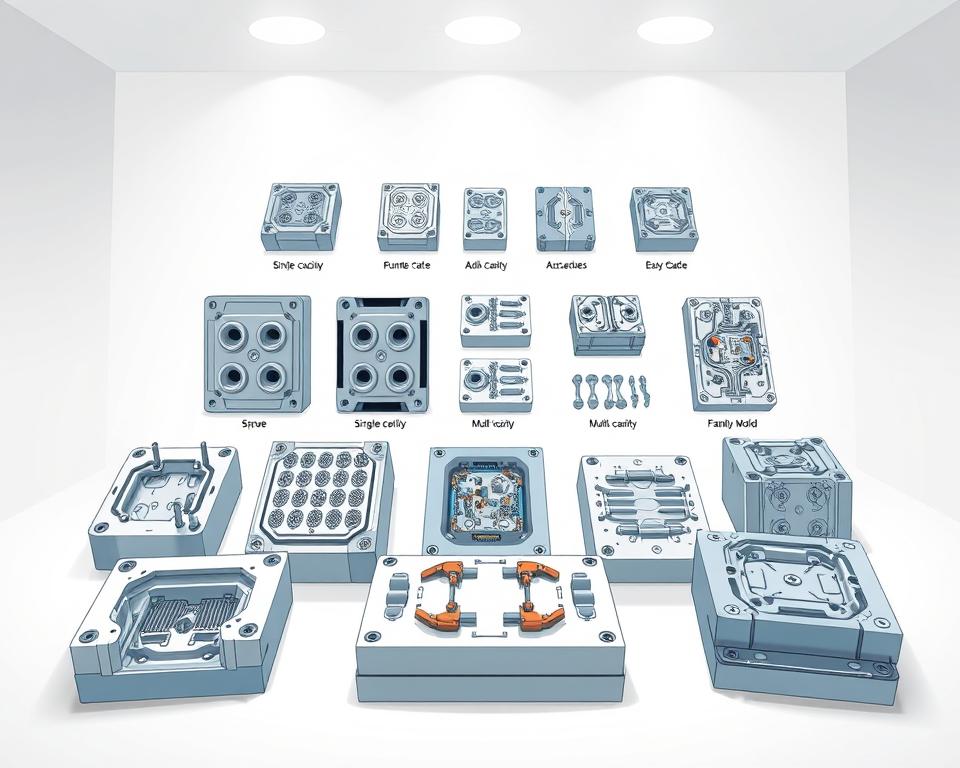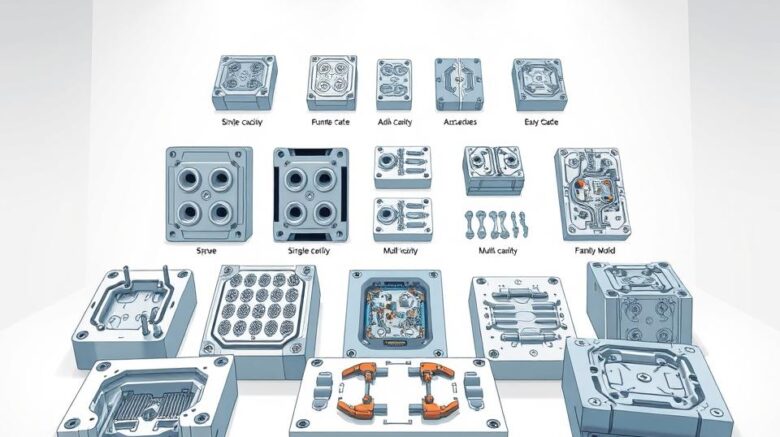Step‑by‑Step Guide to Sourcing Injection Molding in China
The important meeting has recently finished, your new product is a go, the timeline is aggressive, and the budget is… well, let’s just say it’s tight.. Then someone—maybe your boss, maybe the finance director—utters the phrase that sends a little jolt down every project manager’s spine: “We should look at sourcing this from China.”
Naturally, you agree. It makes sense on paper. The potential savings can be massive. Yet your thoughts are already spinning. You’ve heard all the horror stories, right? The nightmare of defective parts, opaque communication, and delayed, off-spec shipments. It can feel like you’re being asked to walk a tightrope between landing a huge cost win for the company and steering your project straight into a ditch.
But here’s the catch. Procuring China injection molding needn’t be a roll of the dice. It’s no different from any structured project. And its outcome hinges on the approach you take. It’s not just about the lowest bid but selecting the best partner and overseeing every step. Ignore the nightmare anecdotes. Let’s walk through a real-world playbook for getting it right.

First Things First: Your Homework
Before searching suppliers or opening Alibaba, nail down your requirements. In fact, most overseas manufacturing headaches stem from a vague or incomplete RFQ. You can’t expect a factory on the other side of the world to read your mind. It’s akin to asking someone to price-build “a structure” with no details. You’ll get wildly varied quotes that are useless.
Aim to craft an RFQ package so precise and comprehensive it leaves no room for error. It’s the cornerstone of your entire effort.
So, what goes in it?
Start with your 3D design files. They’re essential. Use standard formats such as STEP or IGS to ensure compatibility. This is the master blueprint for your part’s geometry.
However, 3D alone won’t cut it. Add comprehensive 2D plans. This is where you call out the stuff that a 3D model can’t communicate. Examples include tolerances (e.g., ‘25.00±0.05 mm’), material grade, surface finish requirements, and functional callouts. Any seal surfaces or critical hole sizes must be clearly labeled.
Then specify the material. Avoid generic terms like “Plastic.” Don’t even just say “ABS.” Get precise. Specify SABIC Cycolac MG38 in black, if that’s the resin you need. What’s the reason? Because plastic grades vary by the thousands. Naming the precise grade locks in the mechanical, thermal, and aesthetic properties you need with plastic mold injection.
A good supplier can suggest alternatives, but you need to give them a clear starting point.
Lastly, add your business data. State your EAU. A supplier needs to know if they’re quoting a tool that will make 1,000 parts in its lifetime or 1,000,000 parts a year. Cavity count, tooling cost, and per-unit pricing depend on volume.
Hunting for the Best Supplier
Now that your RFQ is pristine. who gets your RFQ? The web is vast but overwhelming. Finding suppliers is simple; finding quality ones is tough.
Your search will likely start on platforms like Alibaba or Made-in-China.com. These are great for casting a wide net and getting a feel for the landscape. Treat them as initial research tools, not final solutions. Narrow your pool to about a dozen promising firms.
But don’t stop there. Consider using a sourcing agent. They do cost extra. Yet top agents deliver reliable, audited suppliers. They are your person on the ground, navigating the language and cultural barriers. For a first-time project, this can be an invaluable safety net. Consider it timeline insurance.
Another tactic: trade exhibitions. If you have the travel budget, attending a major industry event like Chinaplas can be a game-changer. Nothing beats a face-to-face conversation. Inspect prototypes, interview engineers, and sense their capabilities. Plus, ask peers for referrals. Ask other project managers in your network. A solid referral can be more valuable than any ad.
Sorting the Contenders from the Pretenders
With your RFQ dispatched to dozens of firms, bids begin to arrive. You’ll see ridiculously low offers and steep quotes. Now, sift through and shortlist 2–3 reliable candidates.
What’s the method? It’s a bit of an art and a science.
First, look at their communication. Is their turnaround swift and concise? Can they handle detailed English exchanges? But here’s the real test: Are they asking you intelligent questions? A great supplier will review your RFQ and come back with thoughts. “Have you considered adding a draft angle here to improve ejection?” or “We see your tolerance requirement here; our CMM can verify that, but it will add to the inspection time. Is that acceptable?” Consider that a big green light. It shows they’re engaged and experienced. A “Sure, no issues” vendor often means trouble.
Next, dig into their technical capabilities. Get their tooling inventory. Review examples of parts akin to your design. A small-gear shop won’t cut it for a big housing.
Finally, inspect the factory. You can’t skip this. Just as you interview hires, audit suppliers. You can travel or outsource a local inspector. They dispatch an on-site auditor for a day. They will verify the company is real, check their quality certifications like ISO 9001, assess the condition of their machinery, and get a general feel for the operation. That small investment can save you thousands.
Converting Digital Designs into Molded Parts
Once you’ve chosen your supplier. you agree on 50% deposit to start toolmaking and 50% balance after sample sign-off. Then comes the real action.
The first thing you should get back after sending your payment is a DFM report. DFM means Design for Manufacturability. This is your supplier’s formal feedback on your part design. It will highlight potential issues like areas with thick walls that could sink, sharp corners that could cause stress, or surfaces without enough draft angle for clean ejection from the mold. A detailed DFM shows expertise. It becomes a joint effort. You iterate with their team to optimize the mold.
With DFM sign-off, toolmaking begins. In a few weeks, you’ll see “T1 samples are on the way.” These are the very first parts off the new tool. It’s your test of success.
Expect T1s to need tweaks. This is normal! You’ll find minor defects, off-spec dimensions, or finish issues. You supply feedback, they tweak the tool, and T2 plastic mold company samples follow. It could require several iterations. Plan for this loop in your schedule.
Eventually, you will receive a part that is perfect. It matches all specs, has a pristine finish, and works as required. This is your golden sample. You ratify it, and it becomes the quality yardstick for production.
Crossing the Finish Line
Receiving the golden sample seems like victory, but you’re not done. Now comes full-scale production. How do you ensure that the 10,000th part is just as good as the golden sample?
You need a clear Quality Control plan. This often involves a pre-shipment inspection. Again, you can hire a third-party service. They’ll randomly select parts, compare them to specs and golden sample, and deliver a detailed report. You receive a full report with images and measurements. Only after you approve this report do you authorize the shipment and send the final payment. This simple step prevents you from receiving a container full of scrap metal.
Finally, think about logistics. Know your shipping terms. Are you on FOB terms, where they load and you take over? Or EXW, where you handle everything from their gate? Your Incoterm selection drives landed expenses.
Overseas sourcing is a marathon. It relies on partnership-building. Treat them like a partner, not just a line item on a spreadsheet. Open dialogue, trust, and rigorous procedure deliver results. Certainly, it’s complex. But with this roadmap, you can succeed, achieve savings, and maintain quality. You’re ready.
